Author: John Fang (Magtron Marketing)
1. Classification of leakage current
The general leakage current is divided into four types, namely: semiconductor component leakage current, power supply leakage current, capacitor leakage current and filter leakage current
1. Leakage current of original semiconductor
A very small current flows when the PN junction is turned off. DS is forward biased and GS is reverse biased. After the conductive channel is opened, current flows from D to S. But in fact, due to the existence of free electrons, free electrons adhere to SIO2 and N +, resulting in DS leakage current.
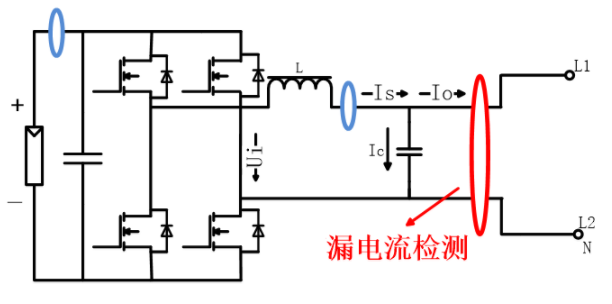
Figure 1.1.1 Leakage current in inverter with IGBT switch
2. Power supply leakage current
In order to reduce interference in the switching power supply, according to the national standard, an EMI filter circuit must be provided. Due to the relationship of the EMI circuit, there is a tiny current to the ground after the switching power supply is connected to the market, which is the leakage current. If it is not grounded, the computer's case will carry a voltage of 110 volts to the ground. It will feel numb when touched, and it will also affect the computer's work.
3. Capacitor leakage current
The capacitor medium cannot be absolutely non-conductive. When the capacitor is added with DC voltage, the capacitor will have leakage current. If the leakage current is too large, the capacitor will be heated and damaged. In addition to the electrolytic capacitor, the leakage current of other capacitors is extremely small, so the insulation resistance parameter is used to express its insulation performance; and the electrolytic capacitor has a large leakage current, so the leakage current is used to express its insulation performance (proportional to the capacity).
Applying the rated DC working voltage to the capacitor will observe that the change in charging current begins to be large, and declines with time. The final value current that reaches a more stable state at a certain final value is called the leakage current. i = kcu (μa); where k is the leakage current constant in μa (v · μf)
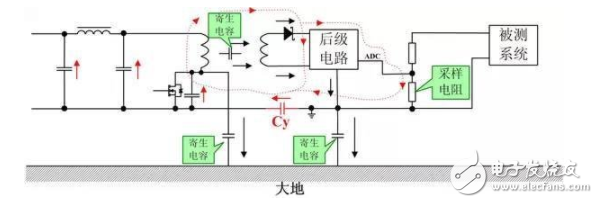
Figure 1.3.1 The triangular relationship between the power supply Y capacitance, EMI and leakage current
4. Filter leakage current
The leakage current of the power filter is defined as: the current from the filter housing to any end of the AC incoming line under the rated AC voltage.
If all the ports of the filter are completely insulated from the housing, the value of the leakage current mainly depends on the leakage current of the common mode capacitor CY, that is, mainly depends on the capacity of CY.
Due to the size of the filter leakage current, which involves personal safety, all countries in the world have strict standards for it. For the 220V / 50Hz AC power supply, the leakage current of the noise filter is generally less than 1mA.
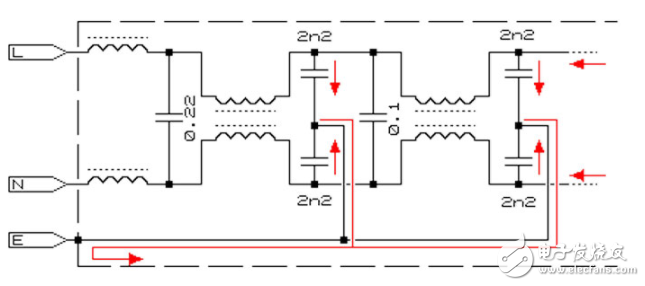
Figure 1.4.1 Leakage current in EMC filter
Second, the principle of system leakage detection
Most technicians are very familiar with the GFCI sensor for ground fault current detection. The detection principle is as follows:
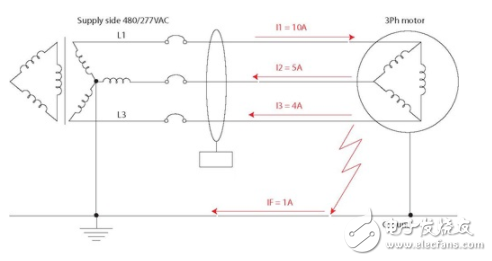
Figure 2.1.1
In a three-phase system, a chip-type RCMU (Leakage Current Monitoring Unit) is placed on the bus. The most important thing is that all three buses pass through the middle hole of the RCMU randomly. The illustrated system does not have a neutral line and is a three-phase three-wire AC system. If it is a three-phase four-wire system, if the current does not run on the neutral line, the neutral line need not pass through the RCMU. Assuming a 10A load connected to a 480 / 277vac system, the RCMU will measure it simultaneously. According to Kirchhoff's law, the incoming and outgoing currents will cancel each other out. The current vector sum of the three busbars should be zero. It can be seen from the figure that without considering the direction: 10A-5A-4A = 1A, that is, the leakage current value on the system line is 1A. The RCMU is based on the design principle of the chip type. The difference from the passive transformer is that it can detect different leakage components and belongs to Type-B RCMU. Speaking of which, briefly review the type of leakage current.
1) AC type leakage protector:
The AC type leakage protector is developed for the power frequency sinusoidal leakage current, and can reliably protect the sinusoidal leakage current that is suddenly applied and slowly rising.
2) Type A leakage protector:
In addition to the reliable protection of the sinusoidal leakage signal, the A-type leakage protector can also reliably protect the leakage signal containing the pulsating DC component.
3) Type B leakage protector:
B type leakage protector can reliably protect sinusoidal AC signal, pulsating DC signal and smooth signal
3. Application of leakage current protection in electric vehicle charging piles
1. There are 4 modes of electric vehicle charging piles:
1) Mode 1:
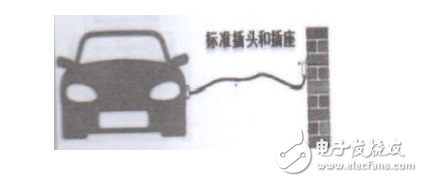
Figure 3.1.1
• Charging is not controlled
• Power interface: ordinary power socket
• Charging interface: dedicated charging interface
• In≤8A; Un: AC 230, 400V
• The conductor on the power supply side provides phase, neutral and ground protection
Electrical safety relies on the safety protection of the power supply grid, and the safety is poor, and it is eliminated in the GB / T 18487.1-2 standard
2) Mode two:
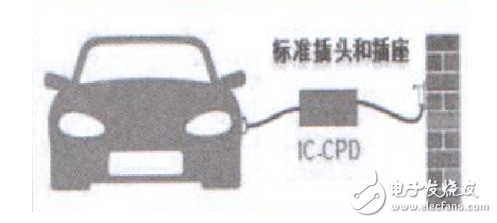
Figure 3.1.2
• Charging is not controlled
• Power interface: ordinary power socket
• Charging interface: dedicated charging interface
• In 《16A; Un: AC 230
• Power and current: 2Kw (1.8Kw) 8A 1Ph; 3.3Kw (2.8Kw) 13A 1Ph
• Earth protection, over current (over temperature)
• The conductor on the power supply side provides phase, neutral and ground protection
• With protection device / control function
Electrical safety depends on the basic safety protection of the power supply grid and the protection of IC-CPD
3) Mode three:
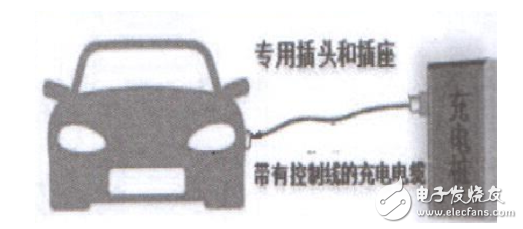
Figure 3.1.3 Connection B

Figure 3.1.4 Connection method C
• Input power: low voltage AC
• Charging interface: dedicated charging interface
• In "63A; Un: AC 230, 400V
• Power and current 3.3Kw 16A 1Ph; 7Kw 32A 1Ph; 40Kw 63A 3Ph
• Earth protection over current
• The conductor on the power supply side provides phase, neutral and ground protection
• With protection device / control function, the plug is integrated on the charging pile
Electrical safety is based on special charging piles and guided detection between piles and vehicles
4) Mode four:
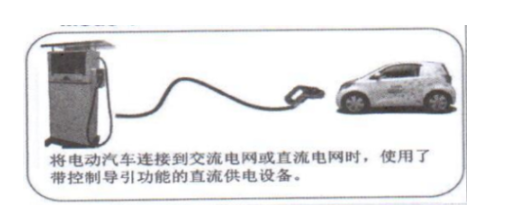
Figure 3.1.5

Figure 3.1.6
Control charging
• Stand-type charger
• Power 15KW, 30KW, 45KW, 180KW, 240KW, 360KW (charging voltage and current depend on module size)
• The function with monitoring and protection device / control is integrated on the pile
• Built-in charging station charging cable
Figure 3.1.7 Leakage current protection points in four charging modes:

Figure 3.1.7
2. The structure of the charging pile is divided into:
1) Modular leakage protection design method
Take an example to discuss the charging piles of mode two, also known as IC-CPD (online charging guide box) and mode three of the leakage protection application. The real objects are shown in Figure 3.2.1
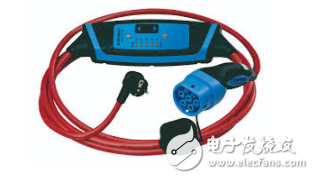
Figure 3.2.1
According to the current leakage protection requirements of IEC62752, it can be equipped with Type A module + DC 6mA module or directly Type B leakage current sensor for protection. Regarding the design volume requirements of Mode 2 IC-CPD, currently basically all use Type B RCMU for design. Figure 3.2.2 MAGMU Type B RCMU design application program
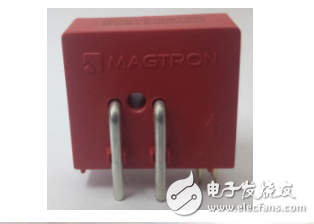
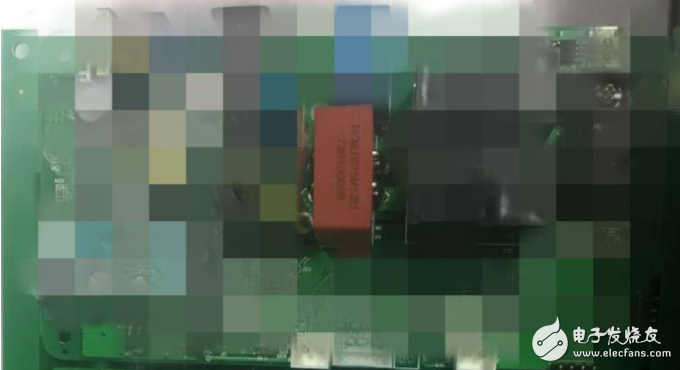
Figure 3.2.2
For the mode three AC pile, for the single-phase pile with low power, the modular type B type leakage current sensor can also be used for protection, and its effect is equivalent to the type B RCCB. Figure 3.2.3
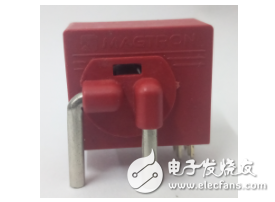
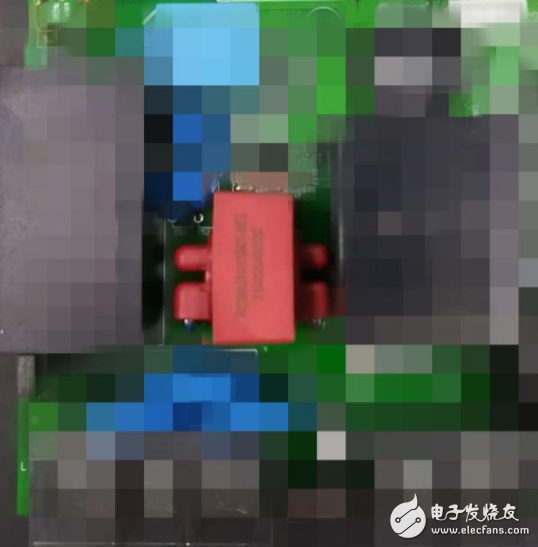
Figure 3.2.3
2) RCD circuit breaker protection design method
For charging piles with higher power, the modular leakage current sensor can not meet the large current passing through the primary bus. Because the volume in the high-power pile is not high compared with the requirements, you can directly choose the B-type RCCB for protection .4. However, the cost of the current type B RCCB is relatively high, and you can temporarily choose the Type A / Type F + DC 6mA mode as shown in Figure 3.2.5 for protection.
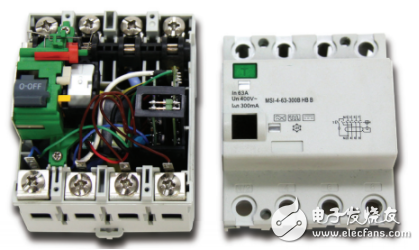
Figure 3.2.4
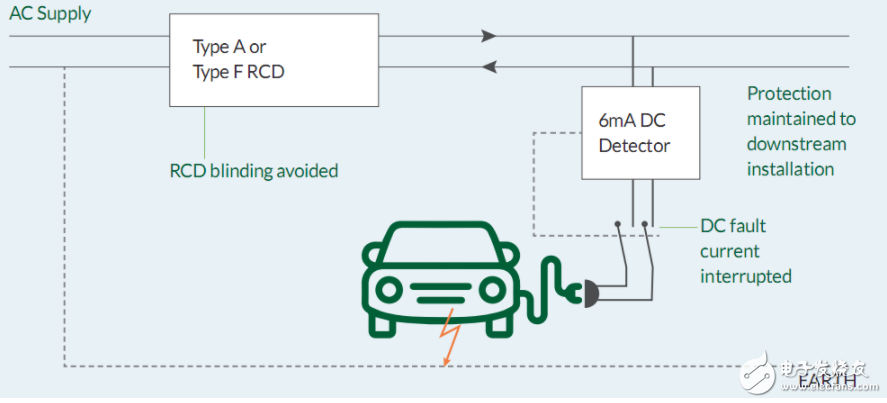
Figure 3.2.5
Refer to my previous article here to review the classification and selection of RCD
4. Classification of RCD
1. According to the number of stages and the number of current loops
Single-level two current loops, two-level, three-level, three-level four current loops, four-level RCD
2. RCDs are classified according to the anti-misoperation performance as follows
RCD with normal resistance to false tripping (general type)
RCD (S type) with enhanced resistance to false tripping
3. According to the delay time (when residual current appears)
RCD without delay
RCD with delay
4. According to the working condition with DC component
AC type RCD
Type A RCD
5. Single-phase 220V circuit, choose 2P or 1P + N type
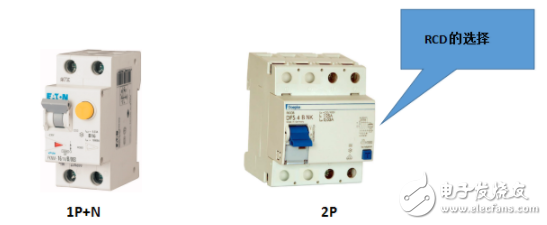
Figure 5.1.1
6. For three-phase three-wire electrical equipment powered by 380V power supply, select three-level three-wire (3P) RCD
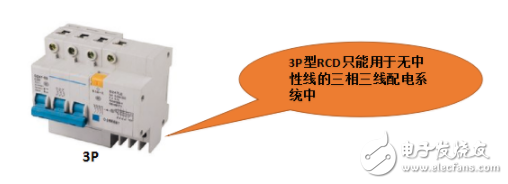
Figure 6.1.1
The 3P type RCD can only be used in a three-phase three-wire distribution system without a neutral line
7. The electrical equipment of three-phase four-wire system 380V electric power supply, or the circuit common to individual equipment and three-phase equipment, should choose three-pole four-wire system (3P + N), or four-pole four-wire system (4P) RCD
All in all, the final protection methods in electric vehicle charging piles will strictly implement Type B protection requirements.
Industrial plugs, sockets and couplers are mainly divided into four categories: plugs, sockets, connectors and appliance input sockets, which are generally collectively referred to as industrial plugs. Its main features are as follows:
1. Safe and reliable
â‘ This kind of product uses the color of the shell to indicate the rated voltage, such as: 40V-45V is purple, 110V-130V is yellow, 200V-250V is blue, 230V-415V is red, and 500V is black. It is easy to distinguish, and you can't get it wrong.
â‘¡Different specifications have different diameters, pole numbers, and grounding contact positions. Only the same specifications can be plugged in to prevent misplugging.
â‘¢There is protection against electric shock. The grounding pole insert sleeve in the socket is longer than the phase pole and neutral pole insert sleeve, so as to ensure that the grounding pole is connected before the phase pole is connected when the plug is inserted, and the grounding pole is finally separated when the plug is pulled out. It is very safe to use.
â‘£Holding devices are provided to clamp the plugs and sockets to prevent them from falling off after being inserted, which improves the reliability.
⑤High protection level. There are IP44 splash-proof type, IP67 anti-immersion type and so on. Not only the human body cannot touch the live parts, but it can also be used under different environmental conditions to ensure safety.
â‘¥An elastic band is added to the insert sleeve. Ensure close contact, good conductivity and long service life after the plug is inserted.
⑦There is a cable clamping device, which can clamp the cable sheath, so that it will not be pulled off, and it is safe to use.
2. Durable
â‘ Good mechanical properties. The product shell is made of high-quality engineering plastic, which has high strength, impact resistance and is not afraid of falling. The rubber and plastic used have anti-aging properties and can be used not only indoors but also outdoors, and are durable.
②Heat resistance and flame resistance. The shell and internal insulating parts have heat resistance, the temperature can reach (100±5)℃, and the important parts can withstand (125±5)℃; and it is flame retardant.
â‘¢More resistant to plug and use. For example, for a product with a rated current of 16A, the number of normal plug-in operation cycles is more than 5000 times.
â‘£The temperature rise test of conductive contact parts shall not exceed 50K, which is suitable for long-term use.
3. Strong versatility
The products adopt the standards of GB/T 11918~11919-2001, which are equivalent to IEC 60309-1 and 2 standards, and are fully in line with international standards. Therefore, such products can be used both domestically and internationally. At the same time, it has a wide variety of specifications, which can meet various occasions and uses.
These characteristics of industrial plugs and sockets give it high safety, reliability and international versatility. Therefore, it has gradually received attention in the country. Through continuous promotion and application, industrial plugs and sockets have gradually entered various industries, such as electricity, ports, machinery industries and large-scale buildings. With the development of science and technology, industrial plugs and sockets are constantly innovating. Various quick installation technologies have been gradually applied to plugs and sockets, making it more convenient to use.
IP44 Plug,IP67 Plug,IP67 Socket,IP44 Socket
Ningbo Bond Industrial Electric Co., Ltd. , https://www.bondelectro.com